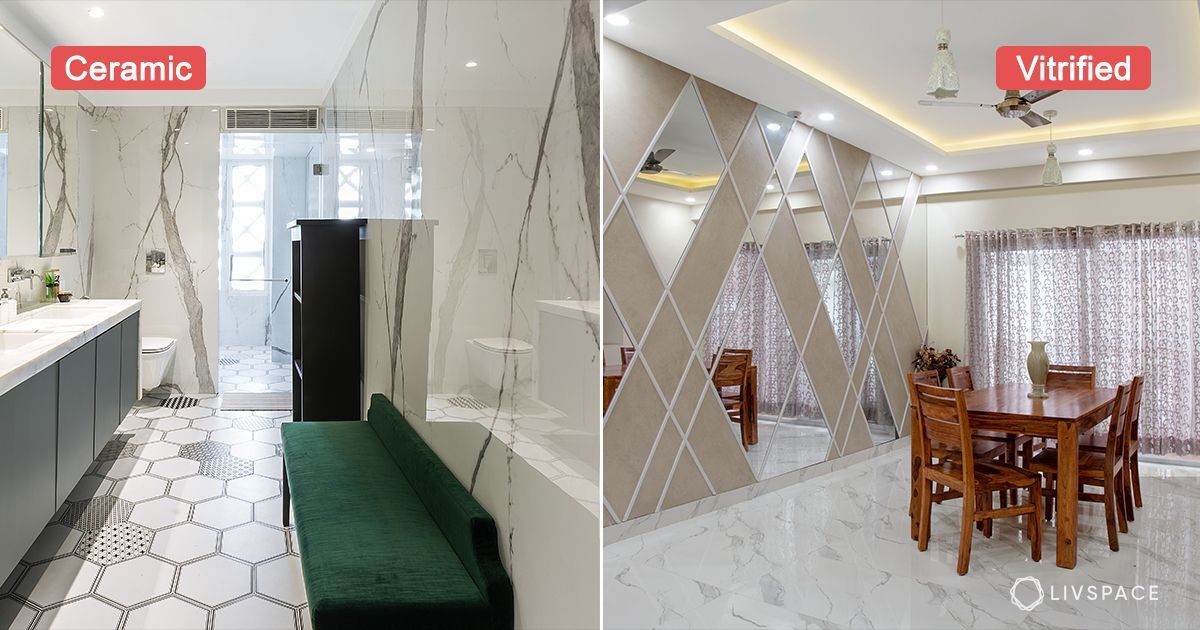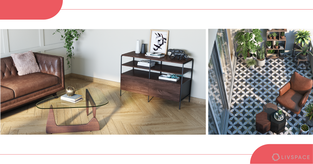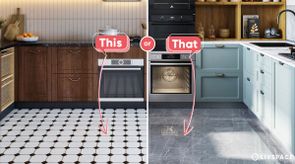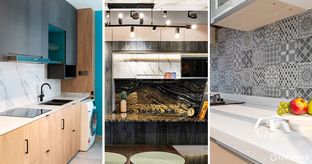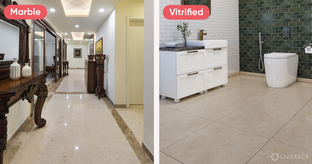In This Article
Flooring ranks high on the list of considerations when planning your home interiors. It forms the base of your home. That’s why the flooring you choose needs to tick all the boxes when it comes to both aesthetic value and durability. Two of the most common flooring options are ceramic tiles and vitrified tiles. But what are the differences between them? We’ve put together a guide to help you understand the differences.
So, if you’re curious to know how these two popular flooring options compare against each other, this guide on vitrified tiles vs ceramic tiles is all you need.
What Are Ceramic Tiles?
Ceramic tiles are made of a mixture of clays and different natural materials like sand, quartz and water.
What Are Vitrified Tiles?
Vitrified tiles are quite similar to ceramic tiles. However, unlike ceramic tiles, they also include silica in the mix, resulting in very low porosity.
Also Read: Marble vs Vitrified: Which Is the Best Flooring for Your Home?
Ceramic Tiles vs Vitrified Tiles – Differences Between Ceramic and Vitrified Tiles
Besides their general appearance, there are a few clear differences between ceramic and vitrified tiles. This can include composition, maintenance, usage, and cost differences of ceramic vs vitrified tiles. Here is a look at how ceramic vs vitrified tiles compare to help you make a choice:
#1: Properties of Ceramic Tiles vs Vitrified Tiles

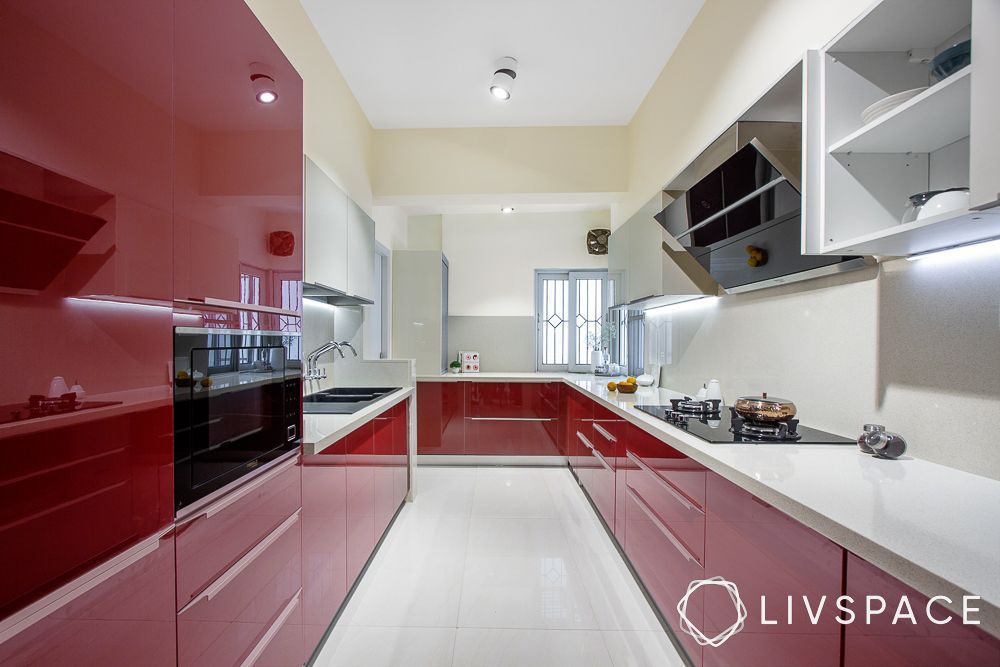
Composition and Texture
In terms of composition, the difference between ceramic and vitrified tiles is simple. Ceramic tiles are made of clay and water, and are baked at high temperatures in a kiln. The glaze formed gives these tiles their ubiquitous shine. These tiles are also available in a variety of colours and patterns, all of which are somewhat earthy.
So, if ceramic tiles are made of clay, what about vitrified tiles? Along with clay, vitrified tiles are made of a mixture of other minerals and solvents, including silica. A glossy substrate develops when the composition is baked to high temperatures, leading to its characteristic smooth texture.
Porosity
Before we understand what are the differences between ceramic tiles vs vitrified tiles when it comes to porosity, let’s first look at the meaning of porosity. Porosity refers to the existence of minute holes on a surface that allow liquids like water to seep through.
Porous materials are not good options for flooring or as kitchen materials as prolonged seepage of water can damage them. Ceramic tiles are slightly porous whereas vitrified tiles have very low porosity. This makes these materials great flooring options.
#2: Finish and Areas of Use
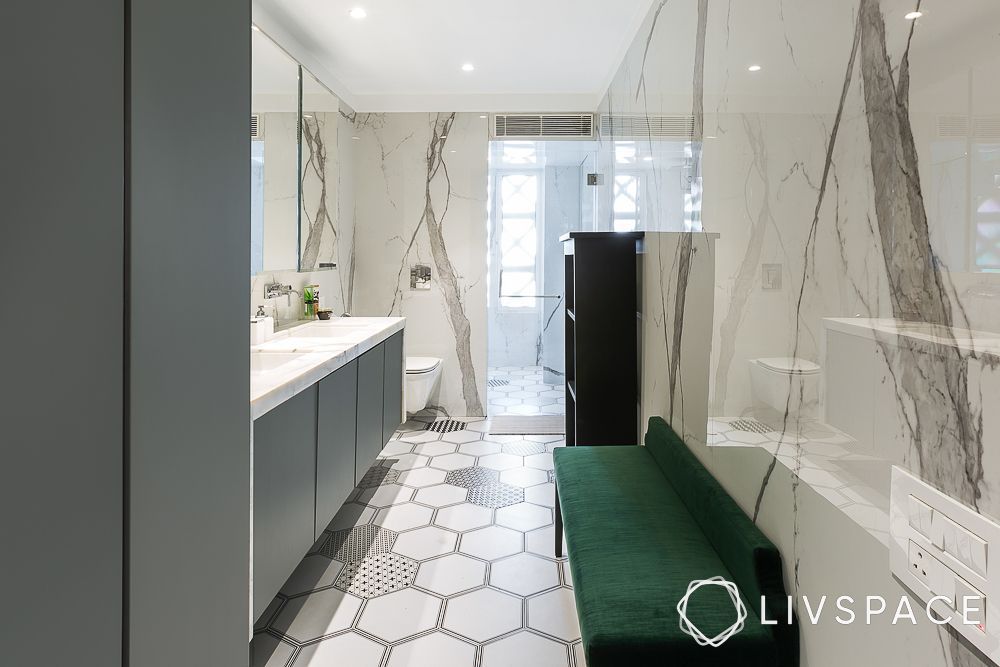
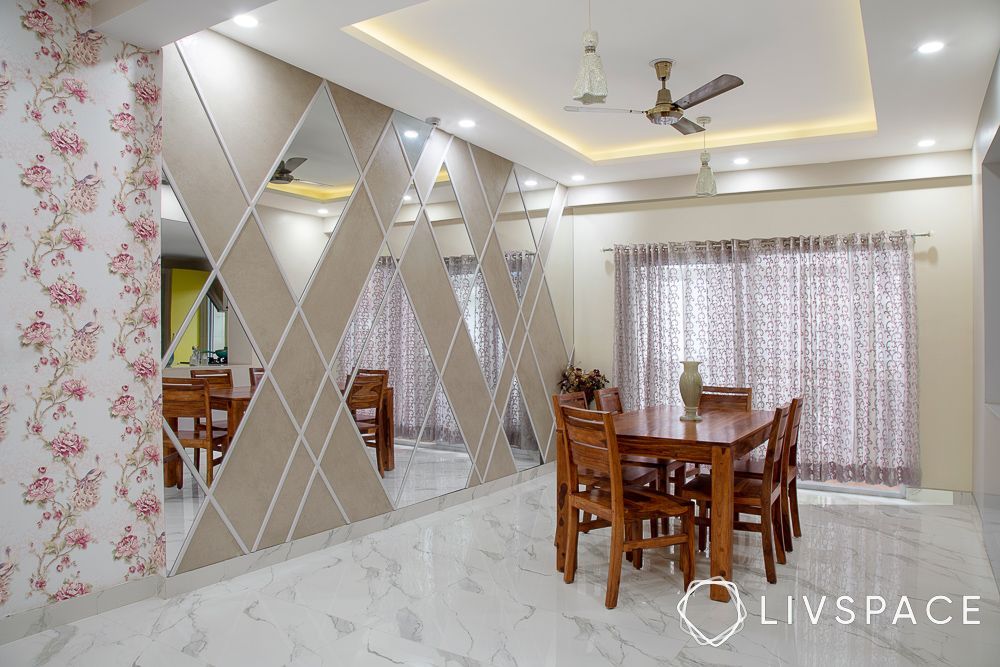
When it comes to the difference between ceramic tiles and vitrified tiles, the area of use also matters. Ceramic and vitrified tiles can be used in different ways. You can use glazed ceramic tiles for flooring, walls, countertops, and backsplashes alike.
This is largely due to their durability and the variety of colours they come in. This means that they are invaluable in serving to enliven the palette and aesthetics in a monotonous kitchen or bathroom setup. Patterned ceramic tiles inlaid into the floor with solid-coloured tiles create a lovely decorative base for your home interiors.
Vitrified tiles are mainly used for flooring because they’re available in large sizes, can be placed in a close-knit manner across the floor and are generally very durable. They also match marble and granite in terms of looks, making them a more affordable flooring option for those going for that look.
Also Read: Wooden vs Tile Flooring: Which Is the Perfect Option for You?
#3: Cost Difference Between Ceramic and Vitrified Tiles
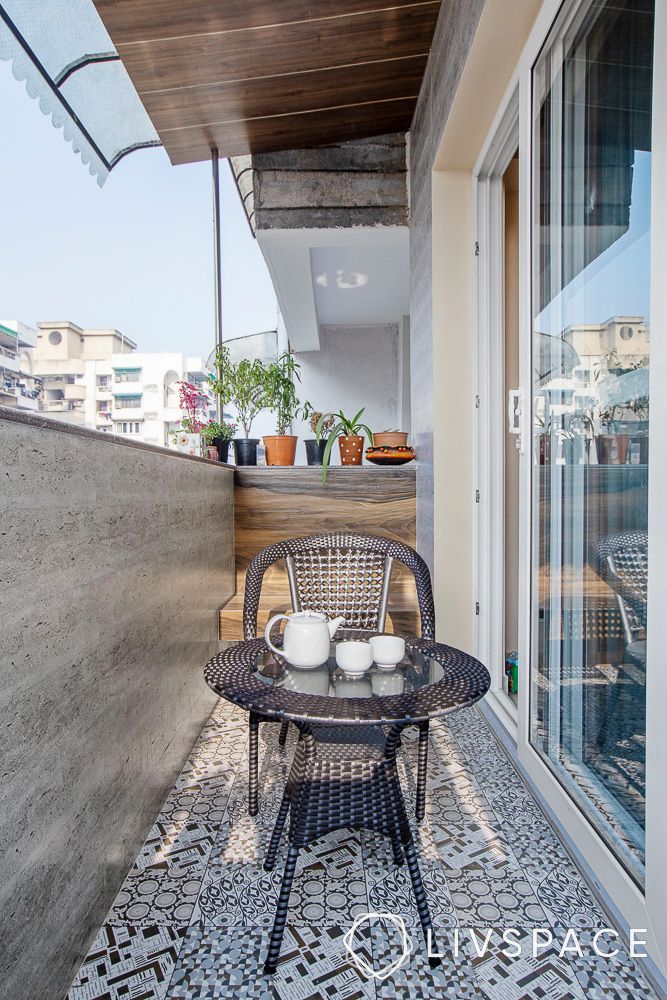
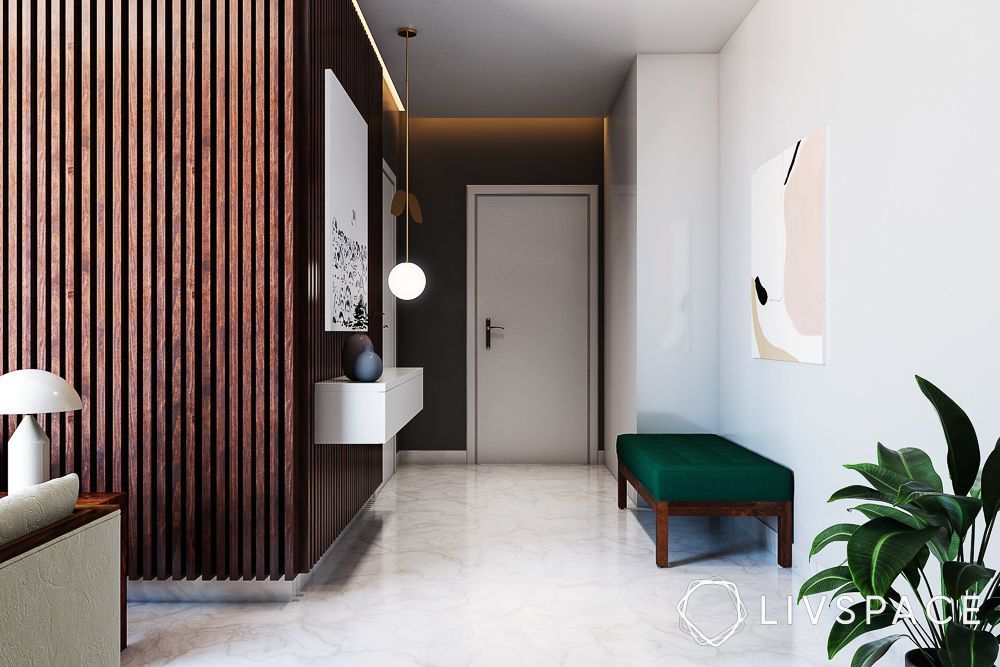
When it comes to the cost of ceramic tiles vs vitrified tiles in India, they are both quite cost-effective. These types of tiles remain cheaper than other relatively more expensive ones like granite and marble, without cutting corners on functionality. However, between ceramic tiles vs vitrified tiles, the ceramic tiles price typically runs cheaper than the other.
#4: Installation of Ceramic vs Vitrified Tiles
While discussing the differences between vitrified tiles vs ceramic tiles, it is important to consider the installation for each type of tile. Ceramic tiles are just as easy to replace as they are to install. However, the joints can be spaced quite far apart and this makes room for grout and grime to settle in the gaps. Vitrified tiles need hardly 48 hours of setting time before they’re ready for use. Additionally, their joints are tighter than those of the ceramic tiles. This feature makes the process of removal quite difficult.
#5: Durability and Maintenance of Ceramic vs Vitrified Tiles
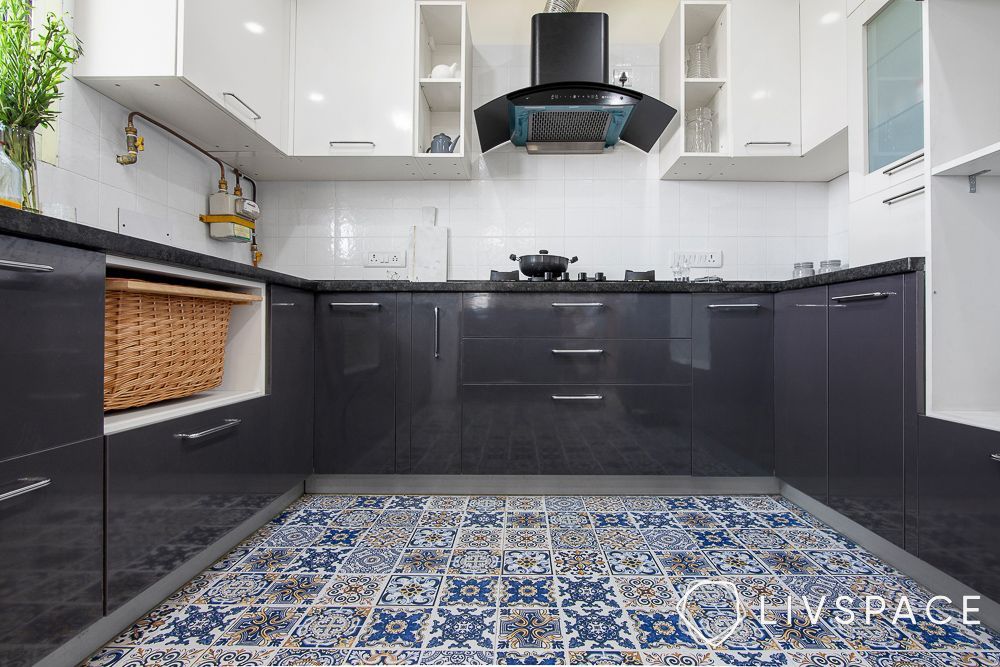
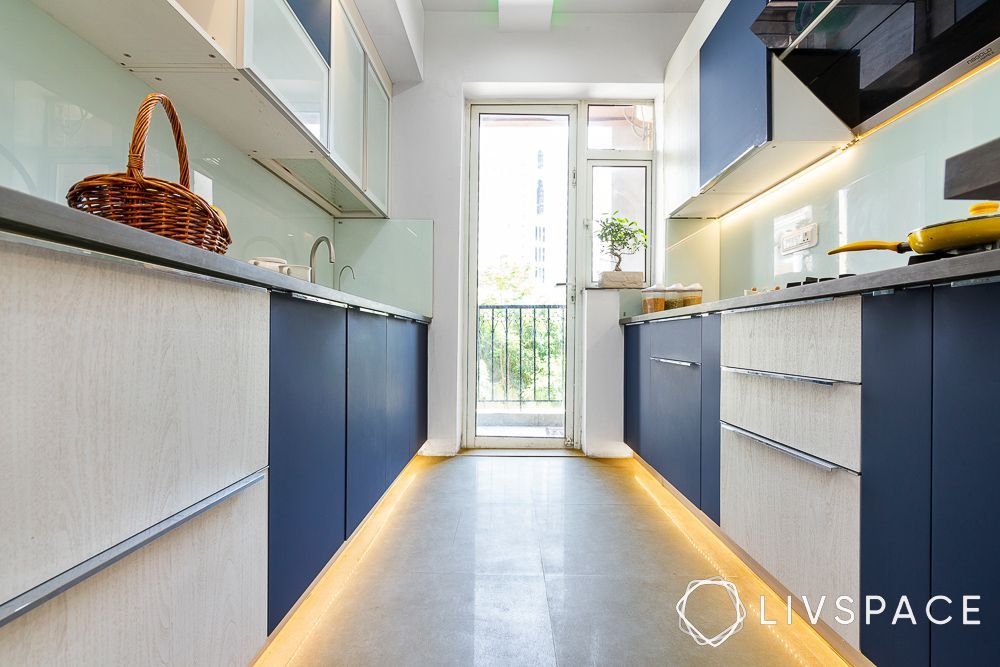
The next point with regards to the difference between ceramic and vitrified tiles is the maintenance. Ceramic tiles are easy to maintain, which is why they make such good tiling or flooring options for high-footfall areas like kitchens and bathrooms. Soap and warm water work well almost all the time to remove most of the accumulated dirt and grime. The glaze generally protects them from scratches and stains.
Vitrified tiles are highly durable and inexpensive, making them the first choice for commercial and residential areas. They’re almost non-porous, which means you don’t need to worry about stains and waterlogging. They also hold their colour well over time. So, if you’re caught between ceramic vs vitrified tiles for bathroom interiors, the latter might be a better option.
#6: Advantages
So, which is better, vitrified tiles or ceramic tiles? Both these flooring types have their own advantages.
The advantages of ceramic tiles include:
- Low maintenance
- Affordable
- Highly durable
- Fire-resistant
- Easy to install
The advantages of vitrified tiles include:
- Smooth finish
- Scrape-resistant
- Stain and water-resistant
- Low maintenance
- Low porosity
#7: UV Light-Resistance
Apart from their differences, vitrified and ceramic tiles also have several things in common. Both these flooring options are resistant to UV rays. This helps in colour retention.
#8: Slip-Resistance
While both ceramic and vitrified tiles have their fair share of advantages, one disadvantage of both these materials is that they can be very slippery.
#9: Water-Absorption
When it comes to ceramic tiles vs vitrified tiles, both these materials have very low porosity. This makes them water-resistant. However, ceramic tiles are not completely water-resistant as their porosity is higher than that of vitrified tiles.
#10: Manufacturing Process
Ceramic tiles are manufactured by following different steps like batching, mixing and grinding, spray drying, forming, drying, glazing and firing. Vitrified tiles are manufactured by hydraulic pressing of a mixture of clay, quartz, feldspar and silica to create a vitreous surface. The final manufacturing process is similar to that of ceramic tiles.
How to Identify Ceramic and Vitrified Tiles?
While discussing ceramic tiles vs vitrified tiles, you also need to know how to identify these materials. Vitrified tiles have a glossy look. On the other hand, ceramic tiles have a coarser texture, which gives them a natural and rustic look.
How Can Livspace Help You?
We hope this list helped you understand the difference between ceramic and vitrified tiles. With this ceramic tiles vs vitrified tiles guide, you’re one step closer to making the right flooring choice for your home.
If you want beautiful interiors for your home, then look no further. Book an online consultation with Livspace today. Have any thoughts or suggestions you’d like to share with us? We’re all ears! Drop us a line at editor@livspace.com.
To know how our customers feel about working with us, check out these Livspace reviews for more details!
Disclaimer: All contents of the story are specific to the time of publication. Mentions of costs, budget, materials, finishes, and products from the Livspace catalogue can vary with reference to current rates. Talk to our designer for more details on pricing and availability.

